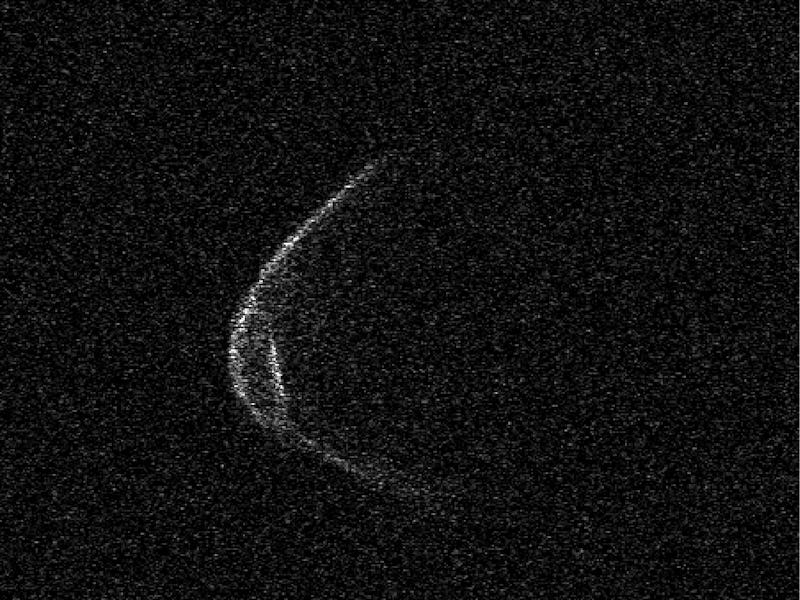An asteroid the size of Manhattan will whiz by Earth on Wednesday
This space rock is mighty, but not dangerous.

On Wednesday, Earth's skies will briefly be greeted by a massive, rocky visitor; an asteroid the size of Manhattan.
Asteroid (52768) 1998 OR2 stretches across 1.2 miles, and will get as close as 3,908,791 miles to Earth, moving at a swift speed of 19,461 miles per hour.
Although the asteroid is classified as 'potentially hazardous,' it poses no real threat to us Earthlings since it will maintain a safe distance that's about 16 times the distance between Earth and the Moon. However, it is a big boy, so if it were on a collision course with Earth, it would likely cause some massive damage worldwide.
The extremely large asteroid will fly by our planet on April 29, but will maintain its distance.
How to see Asteroid (52768) 1998 OR2
The asteroid's closest approach to Earth will take place on April 29, at 5:56 a.m. EDT (0956 GMT), according to NASA's Center for Near-Earth Object Studies.
You can observe part of the astroid's trip in the cosmos through a small telescope, where it will appear as a very slowly moving star. EarthSky has put together sky viewing charts that will aid amateur astronomers in their quest to locate Asteroid (52768) 1998 OR2, which you can access here.
However, if you don't have a telescope handy, you can still take part in the asteroid's journey. The Virtual Telescope Project will host a live viewing of the asteroid's flyby on their website.
Why is Asteroid (52768) 1998 OR2 potentially hazardous?
The asteroid was first observed on July 24, 1998. It is on an eccentric orbit, where it orbits the Sun at a distance of 1.0–3.7 every three years and eight months, according to NASA. During its orbit around the Sun, it crosses the orbit of Earth and Mars.
The next time Asteroid (52768) 1998 OR2 flies by Earth, it will be further away. On May 18, 2031, the asteroid will wave at us from a distance of 12 million miles. It will continue to get further away during its next two flybys, in the years 2048 and 2062.
But the asteroid will draw near once again, flying by at a distance of 1.1 million miles from Earth in the year 2079. This future flyby will make the asteroid the largest known near-Earth objects to pass by at a slim distance that's less than five times the distance between Earth and the Moon for at least the next two centuries.
Although it poses no threat to Earth, (52768) 1998 OR2 is considered a potentially hazardous asteroid. NASA classifies any near-Earth object, whether it be an asteroid or a comet, as potentially hazardous if it makes close approaches to Earth and is large enough to cause significant damage.
All asteroids with a minimum orbit intersection distance of 0.05 astronomical units or less, and an absolute magnitude of 22.0 or less are considered potentially hazardous, according to NASA.
Asteroid (52768) 1998 OR2 definitely tops the charts of large asteroids making close approaches to our planet, but there are some that are even heftier. Asteroid 3122 Florence (1981 ET3), for example, stretches across five kilometers across, and passed by Earth at an eerily close distance of 4.4 million miles in September, 2017.